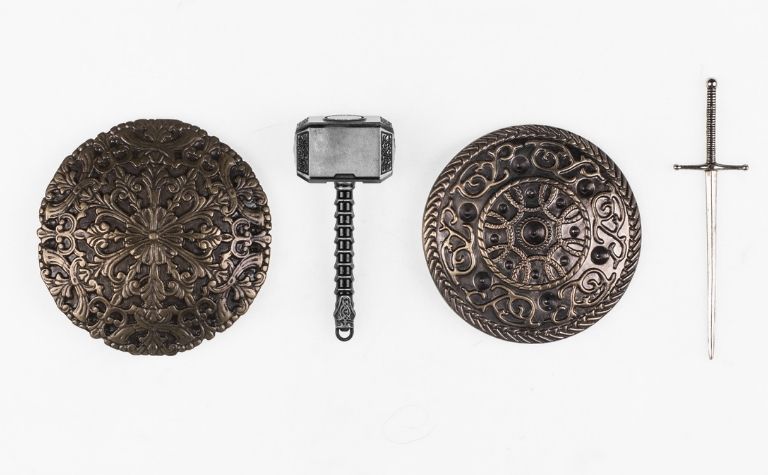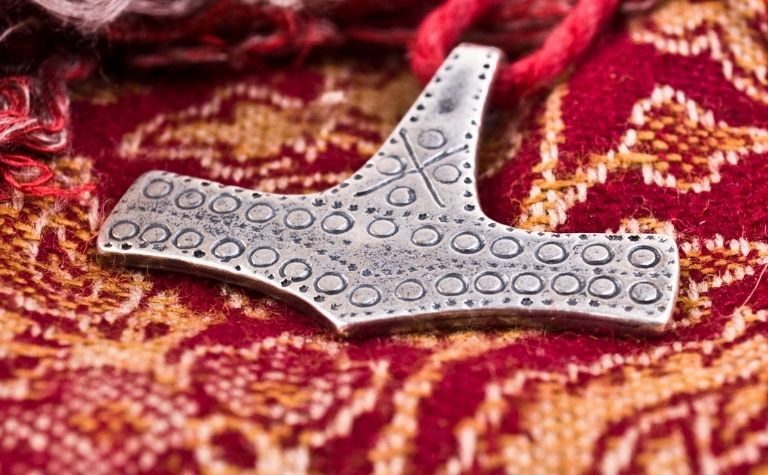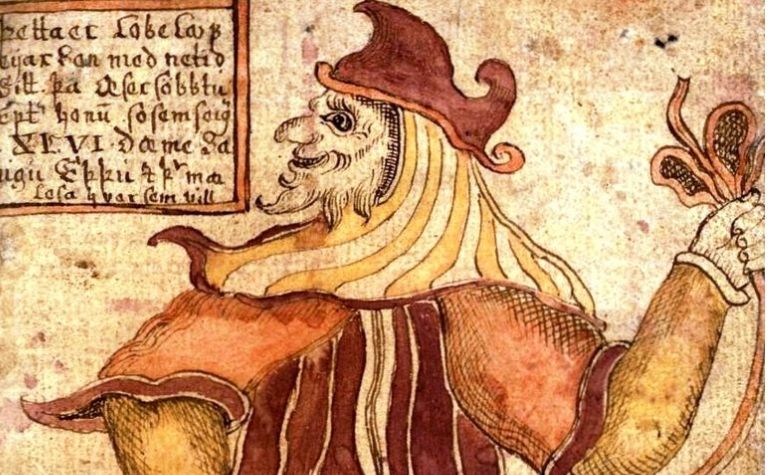Thor is one of the most ferocious and well-known of all the Norse gods. Even people who don’t know much about him usually remember that he has a hammer and kills giants.
What no one seems to know is why Thor kills giants.
Thor kills giants (Jotnar) because they’re the Aesir’s enemies. Unfortunately, what remains of the Eddas isn’t clear why the Jotun and Aesir are enemies – just that they are.
It likely has to do with Odin killing the original giant, Ymir, and using his remains to make the world.
Furthermore, Thor didn’t kill all the giants. There are several stories in Norse mythology where Thor had cordial (or at least non-violent) interactions with giants, including the giantess mother of his child, Járnsaxa.
This article will further explore Thor’s complicated relationship with the Jotun.
Also, find out more about the Giants of Norse Mythology to learn more.

Which Giants Did Thor Kill?
The Eddas make it clear that Thor slew many giants, several of whom aren’t listed by name. However, some stories call out the giants Thor kills by name (or description). These giants include:
- The unnamed master builder Jotun who built the wall around Asgard; Svadilfari’s owner
- Thrym, the giant who stole Thor’s hammer and agreed to give it back in exchange for Freya’s hand in marriage
- All the guests at the betrothal feast celebrating Thrym and ‘Freya’
- Geirröd and his daughters, Gjálp and Greip
Thiazi is another giant who died at the hands of the gods, though it wasn’t specifically Thor who killed him.
The tales say that “the gods” (which should include Thor) lit a fire that burned Thiazi to death.
Did Thor Have a Child With a Giant?
Thor did have a child with a giant. Thor and the giantess Járnsaxa had a relationship, and Járnsaxa bore Thor a son named Magni.
Magni has tremendous strength, possibly enough to rival his father.
According to the myths, he will yield Thor’s hammer after Thor’s death at Ragnarok.
Unfortunately, the wealth of stories history has concerning Greek and Roman mythology far surpasses what’s left of Norse mythology tales.
Furthermore, the Eddas and other surviving sources of Norse myths are often contradictory.
For example, some stories portray Sif and Járnsaxa as the same person.
In others, Sif is listed as a ‘rival’ or a ‘co-wife’ of Járnsaxa. [1]
To confuse things even further, many scholars believe that Járnsaxa is also one of Heimdallr’s nine mothers.
Whatever else isn’t clear about Járnsaxa, the fact that she had a child with Thor is clear. That proves Thor had friendly relations with some of the Jotun, even if he killed many more.
Also, see Does Marvel Own Norse Mythology? to learn more.

Was Thor Half-Giant?
Thor isn’t half-giant. Technically, Thor is at least three-fourths giant instead.
His mother, Jord, is a full giantess, while Odin, his father, is at least half-giant as the son of Bor and grandson of Ymir. [2]
In fact, most of the Aesir have at least some ties to the Jotun, which makes it even stranger that the two races have so much hatred for one another.
However, according to numerous psychological studies, fighting with and harboring ill feelings toward family is more common than fighting with or harboring ill feelings toward strangers. [3] [4] [5]
If psychology is correct, then perhaps it isn’t so hard to see why the Aesir and Jotun fought all the time. Even if the links weren’t fresh, they were related, at least distantly.
Other gods that had ties to the Jotun or giants include the following:
- Frey fell in love with a giantess and married her.
- Nord married the giantess Skadi.
- Odin slept with the giantess Gunnlod to trick her into helping him secure the mead of poetry.
- Odin, Vili, Ve, and Hoenir were the sons of Bor and the grandsons of Ymir.
- Loki shared three children with the giantess Angrboda.
- Loki was also (at least) half-Jotun.
- Heimdallr’s mothers were likely giantesses.
- Some sources claim that Bragi was the son of Odin and the goddess Gunnlod. [6]
Norse Myths Where the Aesir and Jotun Got Along
There are a few stories in the Eddas and other sources where the Norse gods interacted with the Jotnar and didn’t fight or kill them.
The numerous relationships and marriages between the gods and Jotun listed above are evidence of that.
However, there were other civil interactions between the gods and the giants that weren’t of a romantic nature.
For example, in one well-known tale, Thor, Loki, and Thor’s two newly acquired human servants visit Utgard-Loki and have a series of contests with the giants there.
Thor indeed tried to harm the giant Skrymir before they arrived at Utgard-Loki’s palace, but in the end, all parties walked away unharmed. [7]
Also, see 5 Famous Valkyries to learn more.

Was Loki Half-Giant?
Loki is at least half-giant, if not more. The myths aren’t entirely clear about his parentage, but he is referenced as Loki, the son of Laufey and Farbauti.
The Eddas make it clear that at least one of Loki’s parents was a member of the Jotnar.
Some sources claim both of his parents were Jotun, which would make Loki a full giant.
However, this part is less clear. Scholars do know that he is at least partially descended from the Jotnar and has magical powers, which he inherited from his mother.
Who Does Thor Kill at Ragnarok?
Ragnarok is the cataclysmic, end-of-the-world event in Norse mythology.
During Ragnarok, Odin, Thor, and the other Asgardian gods will fight against Loki, his three half-giant children, the fire giants, and the armies of Hel.
In that fight, it’s safe to assume Thor probably kills some giants and other enemies.
However, the only specific being the Eddas mention concerning Thor is Loki’s son, Jormungandr, the world serpent.
In the final battle, Thor and Jormungandr will fight to the death. Thor will slay Jormungandr.
However, immediately after, he’ll take only three steps before falling to his death, poisoned by Jormungandr’s venom.
After his death, his sons Magni and Modi will take up his hammer, Mjolnir, and continue the fight.
When everything is finished, they will be two of only a handful of gods to survive the conflict.
Conclusion
Thor killed giants because they were the Aesir’s enemies. However, he didn’t kill every giant he met and even had a child with one.
Also, see Does Norse Mythology Have Demons? to learn more.
References:
[1] Source
[2] Source
[3] Source
[4] Source
[5] Source
[6] Source
[7] Source
